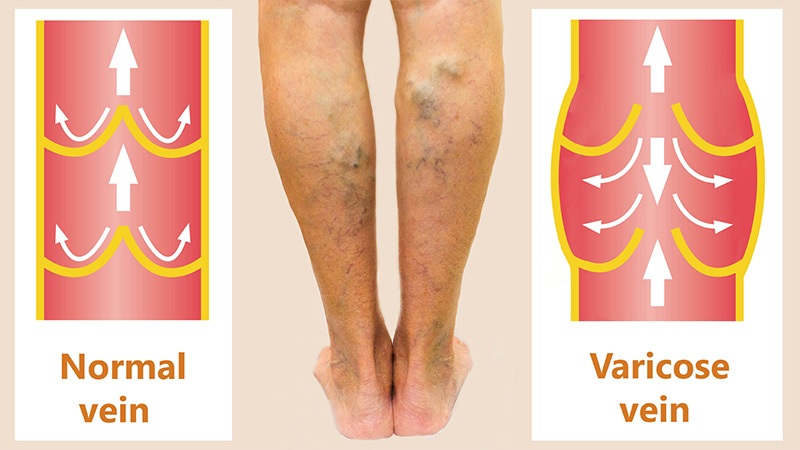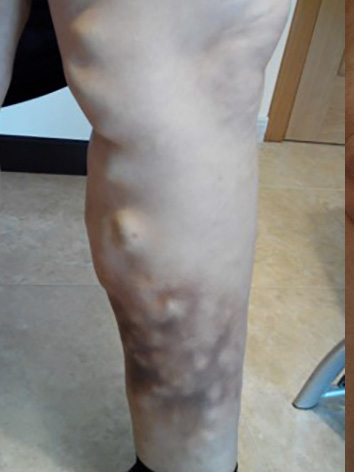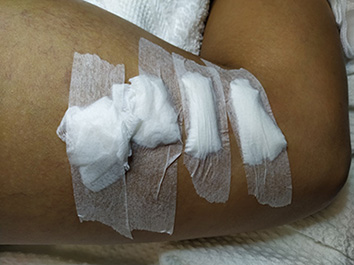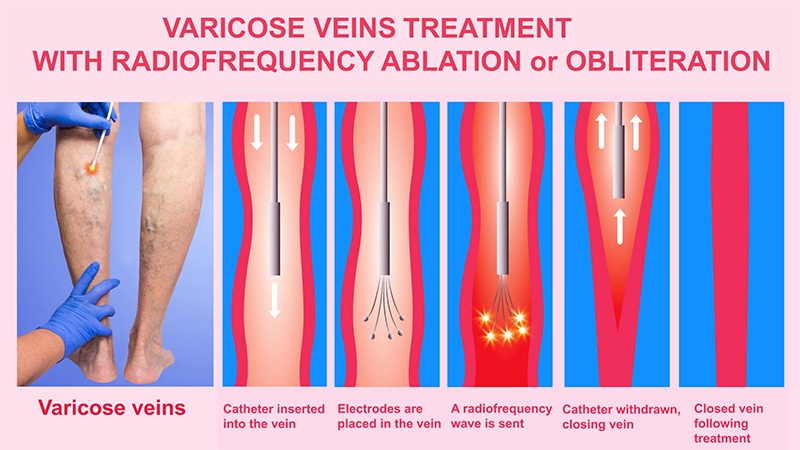HELPING
PATIENTS
VARICOSE VEINS
 Cause varicose vein
Cause varicose vein
Varicose veins, also known as varicoses or varicosities, are enlarged, swollen and twisted veins. Any vein in the body is susceptible to become enlarged, but in most cases, when someone talks about varicose veins, they refer to the ones that occur on legs and feet. They may be blue or purple, and often bulge in the skin.
Varicose veins don’t have a specific cause, although they are more commonly seen related to pregnancy, obesity, lack of exercise, trauma and family history of varicosities. They are also twice as common in women than men, and they affect their self-perception. They are easily diagnosed by inspection, but in most cases, ultrasound scanning (USS) is used during the consultation.
Although in many cases they cause no symptoms, people may complain of heaviness of their legs, swollen ankles, itching and pain in the area. Varicosities are the visible sign of a medical condition known as Chronic Venous Insufficiency (CVI). And when left untreated, they may progress to more advanced stages of the disease and ultimately, to produce leg ulcers, which represent an important health problem.
 Varicose veins
Varicose veins
 Severe varicose veins
Severe varicose veins
WHAT SHOULD I DO IF I HAVE VARICOSE VEINS?
Although varicose veins are sometimes perceived as a cosmetic issue, they represent a health condition. Many people, particularly men, don’t pay much attention to them, as they don’t cause any symptoms in the initial stages. But as they will eventually develop symptoms and more severe signs of the disease, the recommendation is to get them assessed and treated by a vein specialist doctor.
HOW CAN LEG VARICOSE VEINS BE TREATED?
Until fairly recently, surgery was the only option available. The surgery consisted of the stripping of the saphenous vein and sequential microphlebectomies and required hospitalisation.
Foam Sclerotherapy
Foam sclerotherapy was developed in Italy in the 1950´s by Professor Tessari, and quickly became one of the standards of care. With this method, a foam is produced by mixing a sclerosant solution at varying concentrations with air or CO2, and then is injected inside the diseased vein, in some cases under ultrasound guidance. The foam disperses more slowly than a solution, allowing more time for the irritant action to occur, and so, able to treat larger, more dilated veins.
Compression is also a key part of the procedure, and compression pads are applied over the treated veins when the procedure is performed. Also, gradual compression stockings (Class II or Class II) are to be worn for 2 to 3 weeks after the sclerotherapy session. Although some patients are reluctant to wear these compression stockings, the reality is that failure to do so will imply not achieving the desired results
Foam sclerotherapy is a very safe and effective procedure, with a success rate of up to 70% of cases.
 Foam sclerotherapy
Foam sclerotherapy
 Swabs after foam sclerotherapy
Swabs after foam sclerotherapy
Endoluminal ablation
The development of endoluminal techniques, where all the treatment is performed from within the lumen of the vein made possible a minimal invasive approach to treat varicose veins. With these methods, a catheter is introduced under ultrasound guidance and once inside, either laser or radiofrequency energy is delivered to “burn” the vein, which will eventually shut down and transform into a fibrotic cord.
 Endoluminal ablation
Endoluminal ablation
A new, innovate procedure called VenablockⓇ, uses glue to produce the ablation of the diseased vein. In this case, no energy is delivered within the leg, but instead, a glue is injected in the saphenous vein under ultrasound guidance, and the vein will be instantly sealed. To learn more about this procedure, introduced in the UK by Dr. Arturo Almeida in partnership with Zeela Medical Ltd, please click here.


FREQUENTLY ASKED QUESTIONS
WHAT IS THE BEST METHOD TO TREAT MY LEG VEINS?
For thread veins, aka spider veins, microsclerotherapy is the treatment of choice,m which can be combined at times with laser or Thermavein treatment.
DOES SCLEROTHERAPY HURT?
WILL MY VEINS DISAPPEAR IMMEDIATELY AS I’VE SEEN IN SOME VIDEOS?
DO I NEED TO WEAR COMPRESSION STOCKINGS AFTER THE TREATMENT?
WHAT IS THE BEST TREATMENT FOR THREAD VEINS ON FACE?
ABOUT DR. ALMEIDA
As a Consultant surgeon, Dr. Almeida has been treating vein conditions for 2 decades, and he has personally performed thousands of these procedures at different clinics in Europe. He also teaches and trains medical professionals on these vein techniques. Therefore, if you need a skilled and expert professional to deal with your vein problem, whether cosmetic or more medical. Dr. Almeida is your “go-to” expert.
To BOOK A FREE, NON-OBLIGATION CONSULTATION WITH DR. ALMEIDA, please CLICK THE BUTTON BELOW


